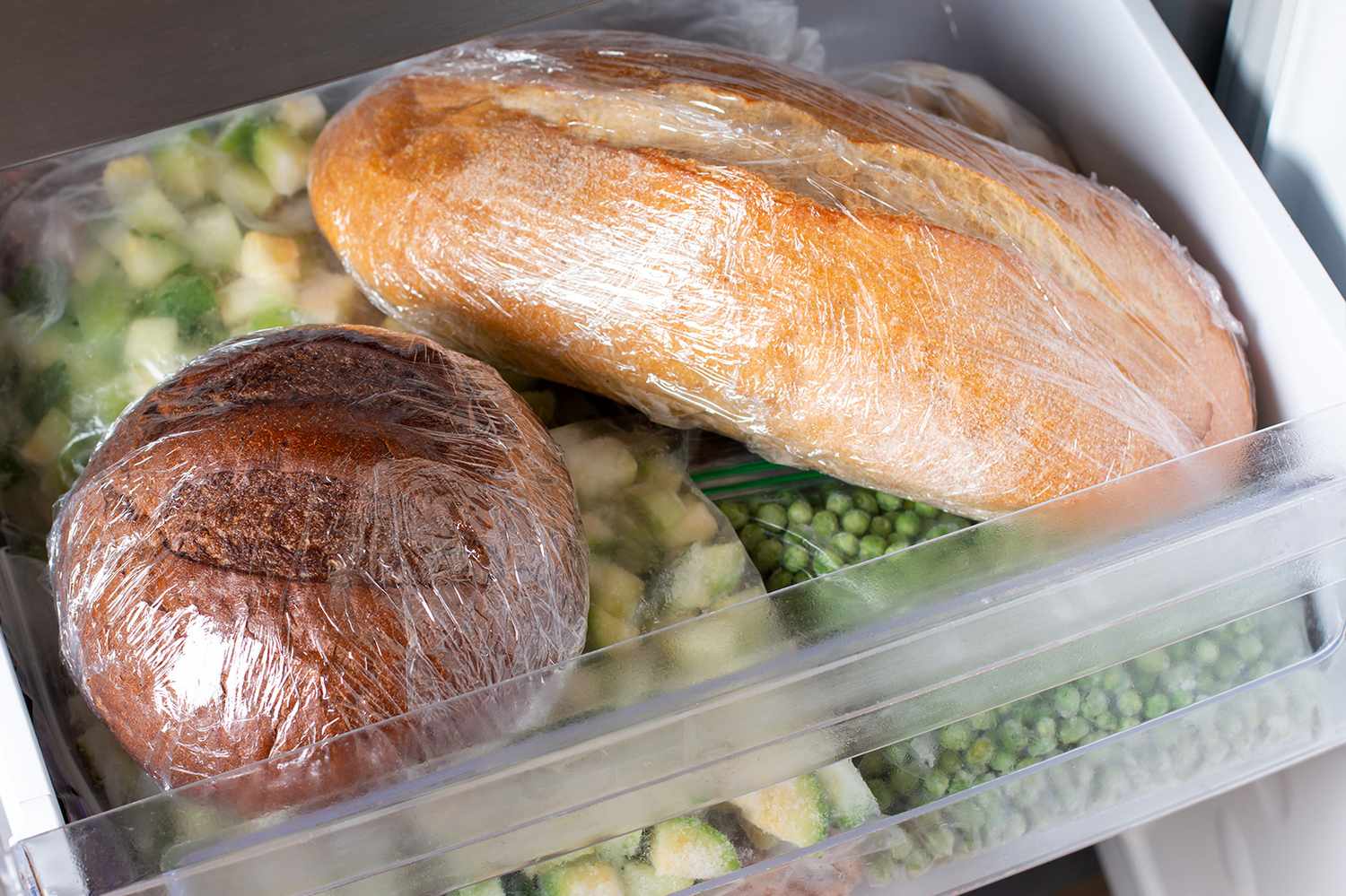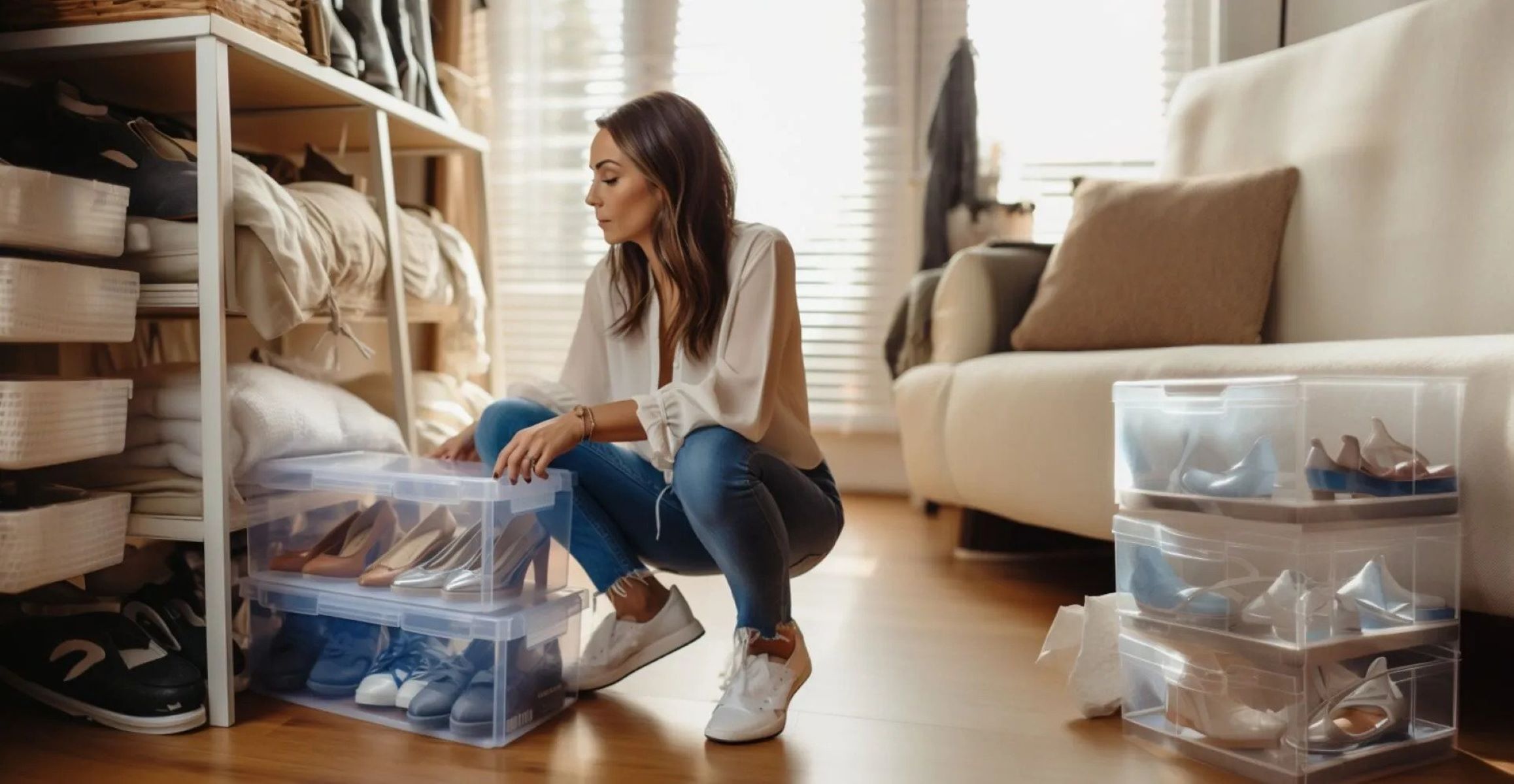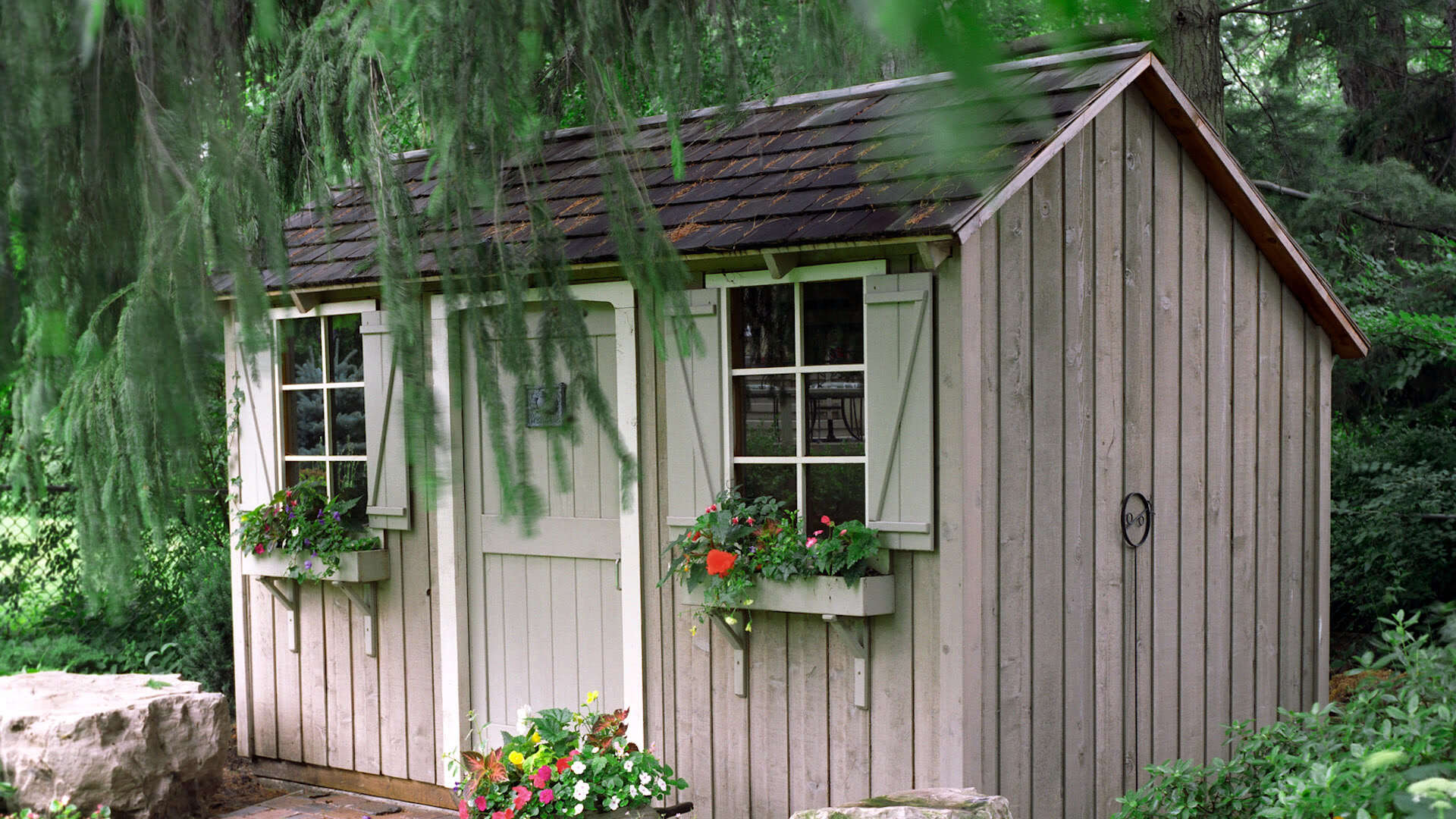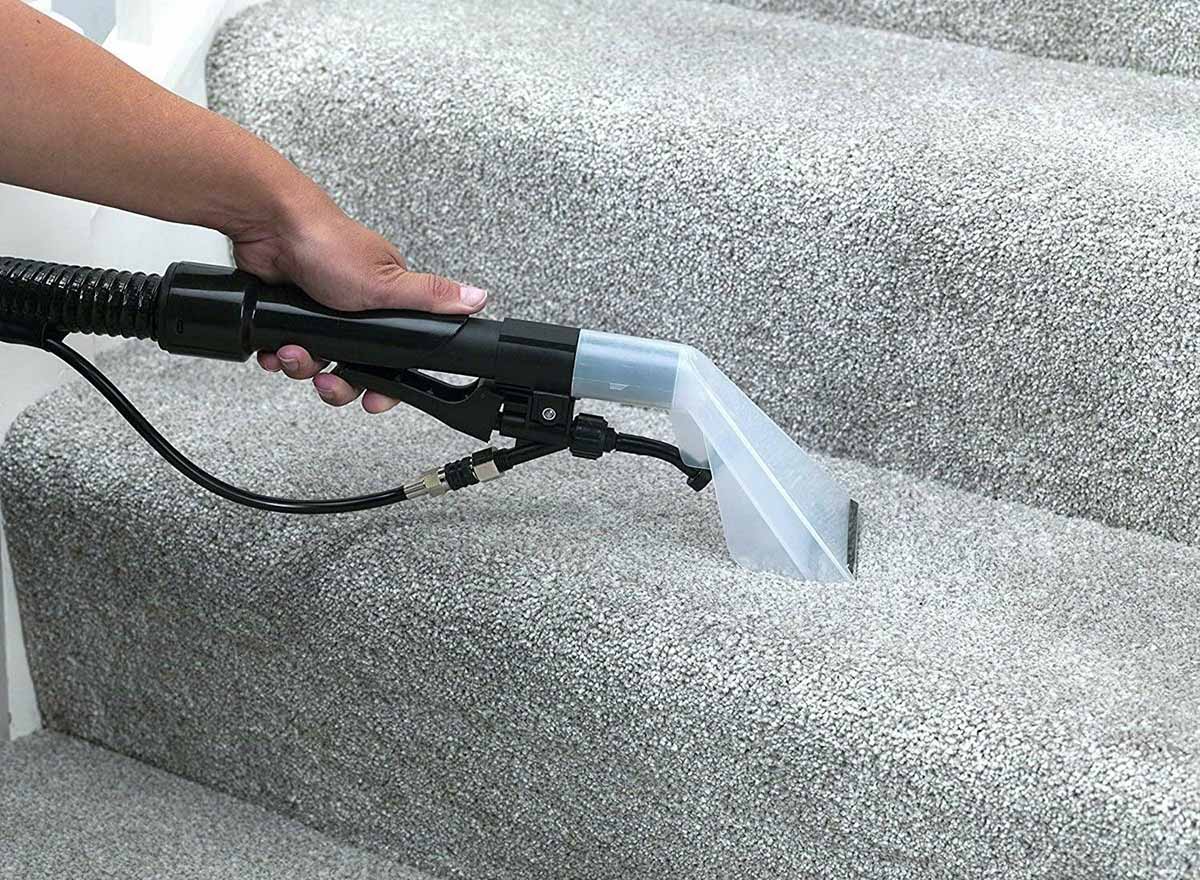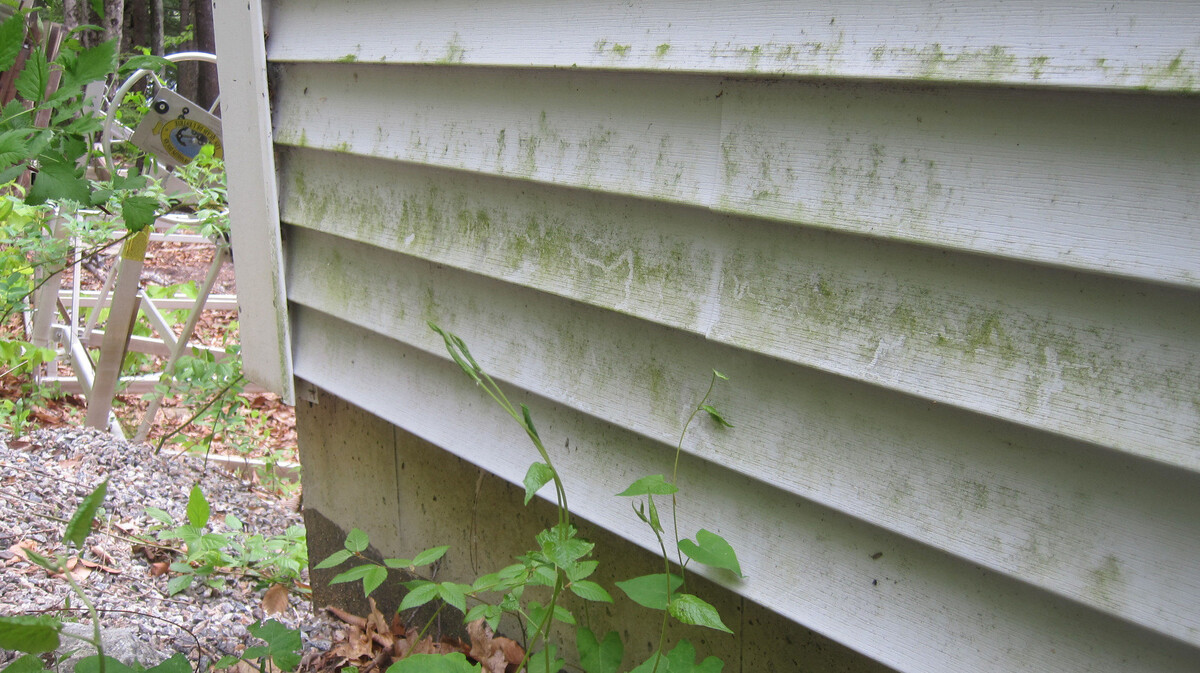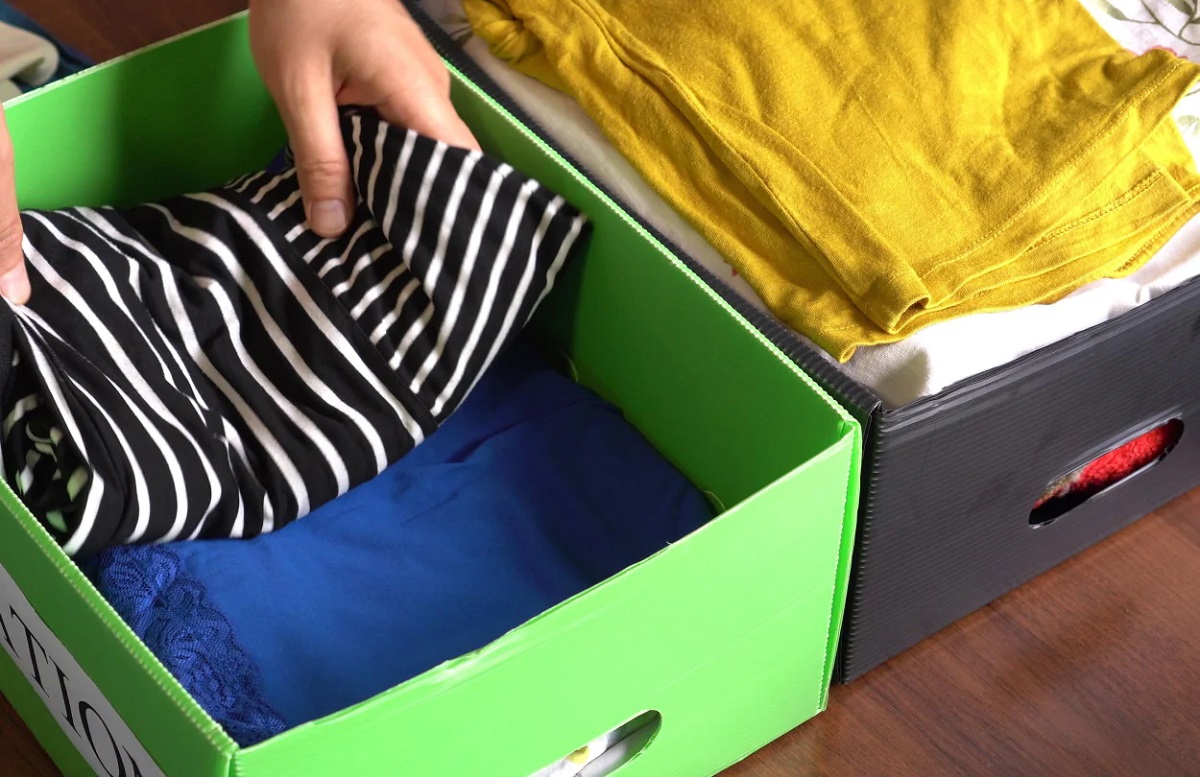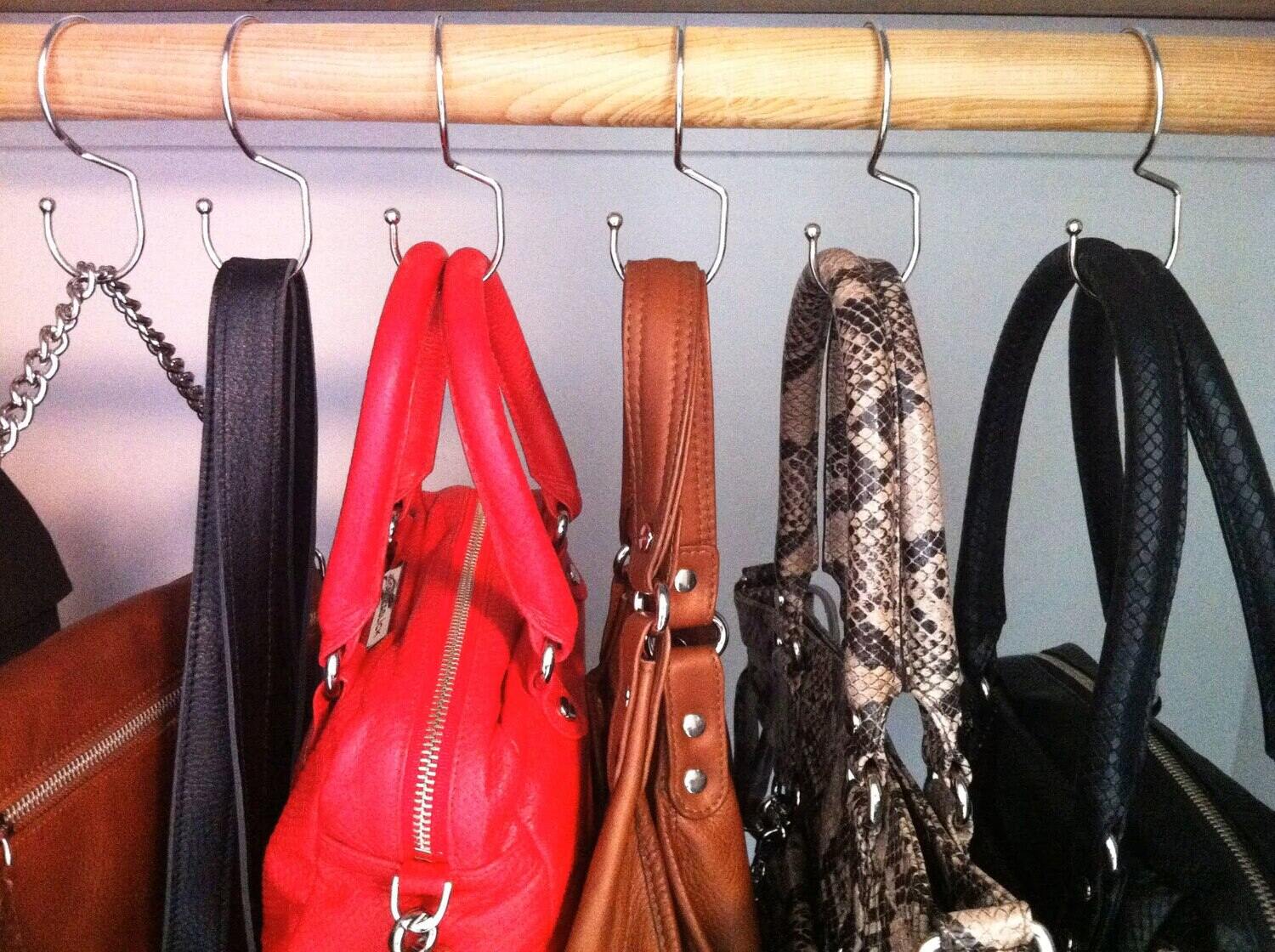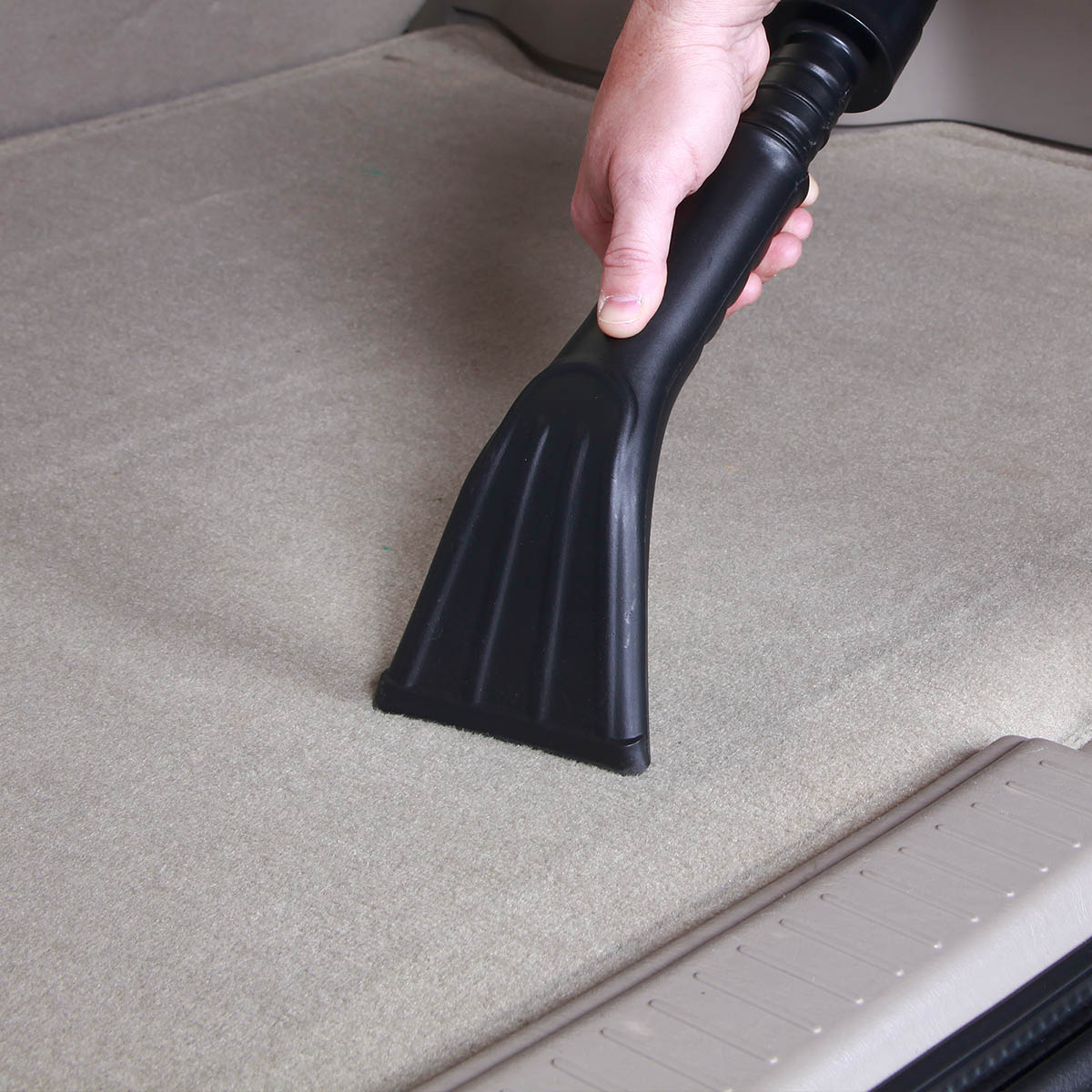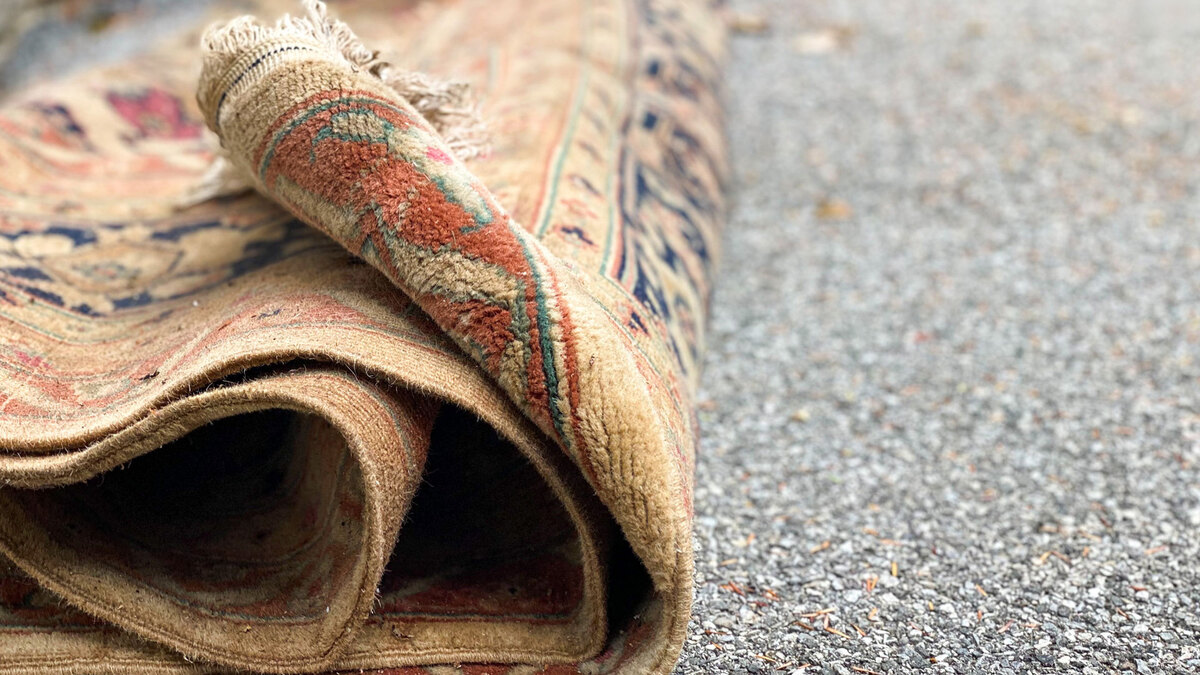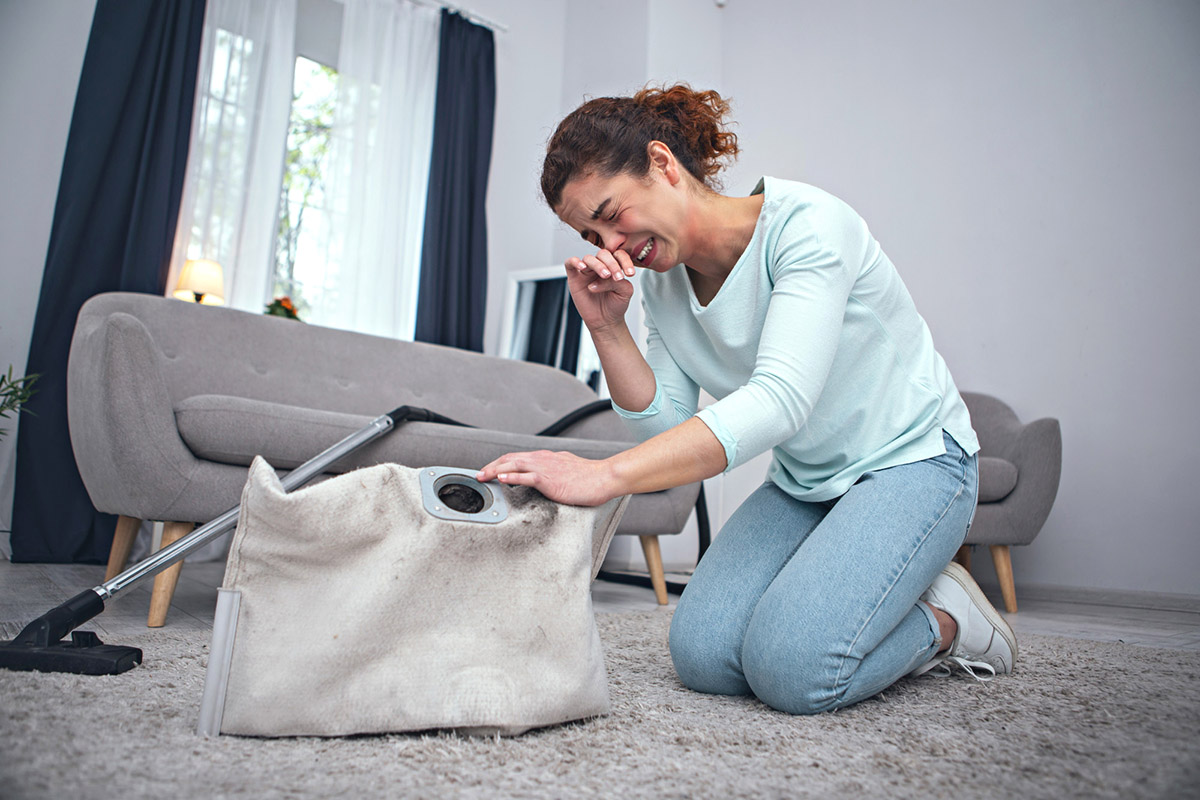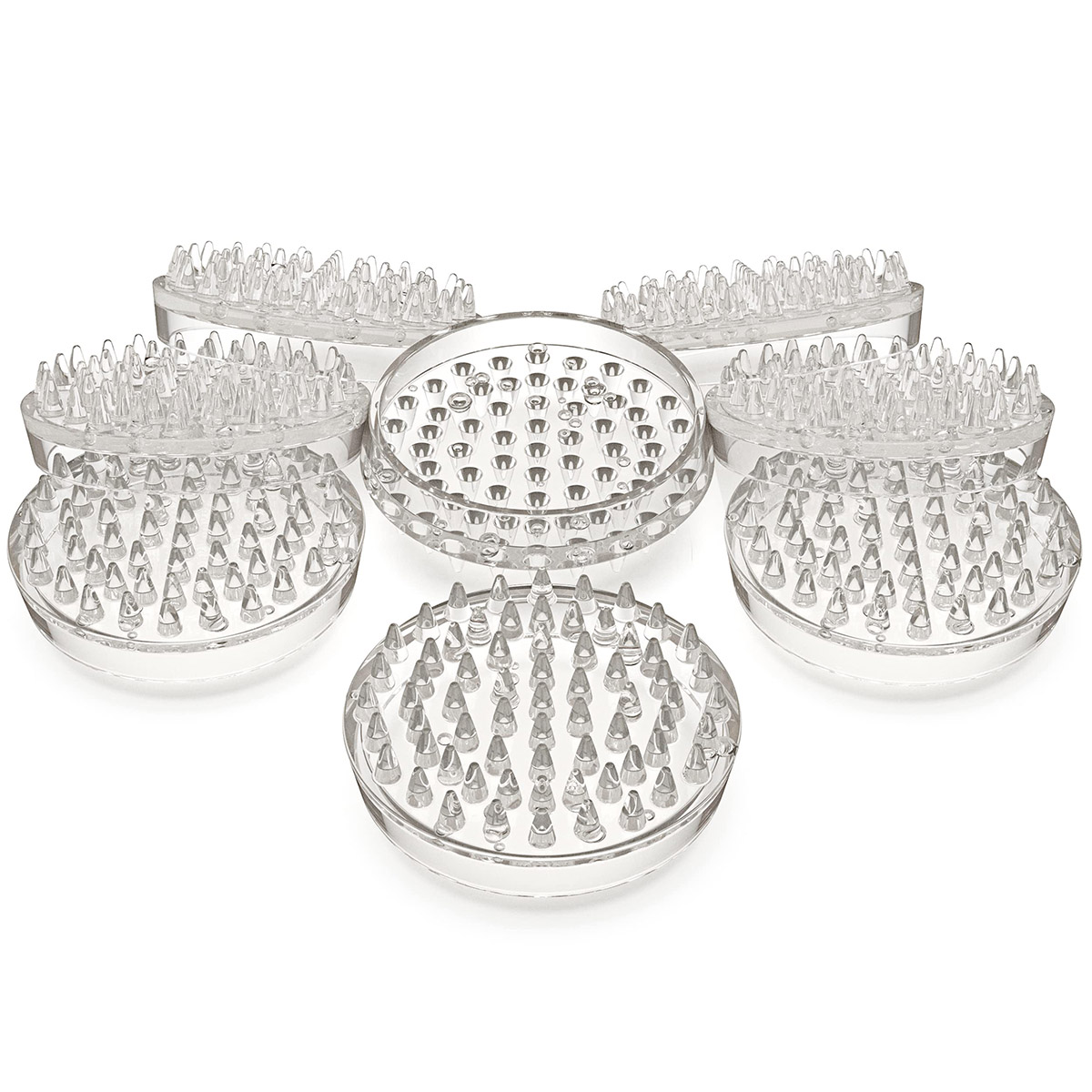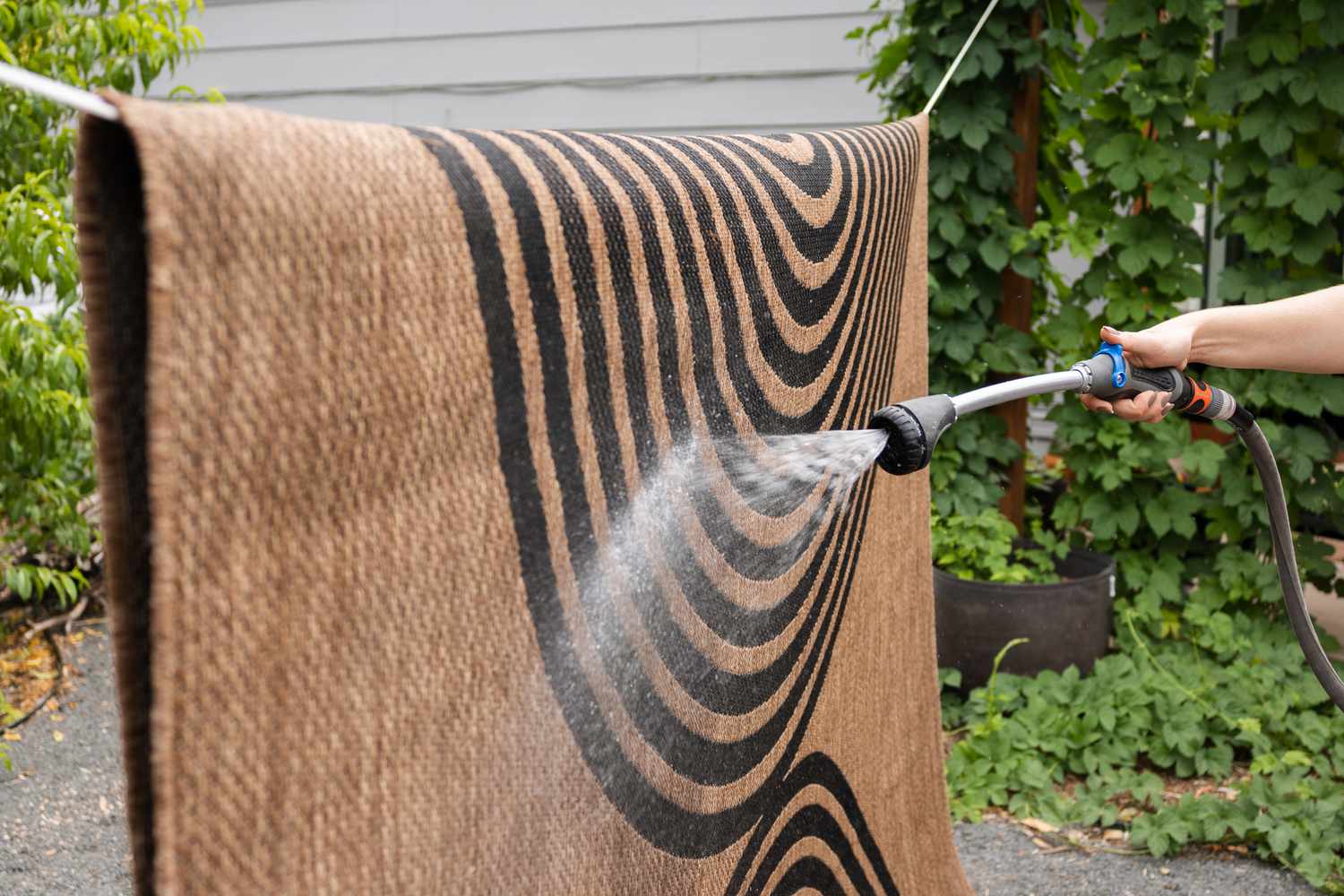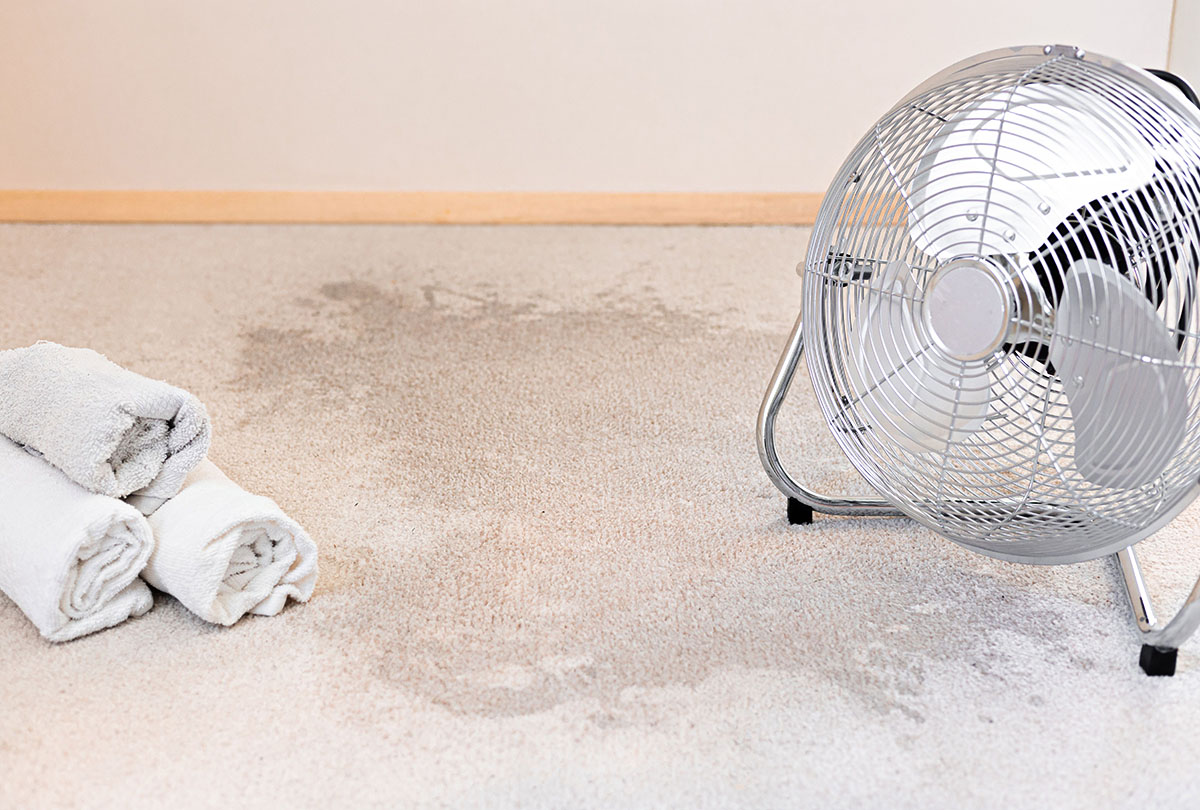

Articles
How To Prevent Mold On A Wet Carpet
Modified: September 2, 2024
Learn effective methods to prevent mold growth on a wet carpet with our informative articles.
(Many of the links in this article redirect to a specific reviewed product. Your purchase of these products through affiliate links helps to generate commission for Storables.com, at no extra cost. Learn more)
Introduction
Welcome to our comprehensive guide on how to prevent and combat mold on a wet carpet. Whether you’ve experienced a leak or a flooding event, it’s important to act quickly and efficiently to address the issue in order to prevent mold growth. Mold not only poses serious health risks but can also cause severe damage to your carpet and the underlying structure of your home. In this article, we will explore the causes of mold on a wet carpet and provide you with effective strategies to prevent its growth.
Mold thrives in damp and humid environments, making a wet carpet the perfect breeding ground for its development. The presence of mold not only results in an unpleasant odor, but it can also lead to respiratory issues, allergic reactions, and other health problems. Additionally, mold can ruin the aesthetics of your carpet and impact the overall cleanliness and air quality of your home.
Understanding the causes of mold on a wet carpet is crucial for effectively preventing its growth. This can be due to various factors such as leaks in plumbing, a broken pipe, a roof leak, or even flooding due to heavy rainfall or a burst pipe. Regardless of the cause, it’s important to address the water damage promptly to minimize the risk of mold growth. With the right techniques and strategies, you can protect your carpet and maintain a healthy living environment for you and your family.
In the following sections, we will provide you with practical tips on how to properly dry a wet carpet, control moisture with dehumidifiers, ventilate the affected area, remove standing water from carpets, apply anti-microbial products, regularly clean and vacuum carpets, and take immediate action to address carpet water damage. By following these strategies, you can effectively prevent mold growth and ensure the longevity of your carpet.
So let’s dive into the details and learn how to prevent mold on a wet carpet!
Key Takeaways:
- Act quickly: Address water damage on a carpet within 24-48 hours to prevent mold growth. Employ proper drying techniques, control moisture, and ventilate the area to protect your carpet and maintain a healthy living environment.
- Preventive measures: Use anti-microbial products, regularly clean and vacuum carpets, and take immediate action to address water damage. Implementing these strategies can effectively prevent mold growth on a wet carpet and ensure its longevity.
Understanding the Causes of Mold on a Wet Carpet
Mold on a wet carpet can be caused by various factors, so it’s essential to understand these causes to effectively prevent its growth. Here are some of the common causes of mold on a wet carpet:
- Water Leaks: Leaks from plumbing fixtures, such as pipes or faucets, can result in water seeping into your carpet. If left unaddressed, this moisture can lead to mold growth. Inspect your plumbing regularly to ensure there are no leaks.
- Roof Leaks: Any leaks in the roof, such as missing shingles or damaged flashing, can allow water to enter your home. If the water reaches your carpet, it can create the ideal conditions for mold to thrive. Regularly inspect your roof and take necessary repair measures to prevent leaks.
- Flooding: Heavy rains, hurricanes, or even burst pipes can cause flooding in your home. When carpets are saturated with water from a flood, they become extremely vulnerable to mold growth. It’s crucial to take immediate action and dry out the carpet as soon as possible.
- Humidity: High levels of humidity in your home can also contribute to mold growth on a wet carpet. Areas with poor ventilation, such as basements or bathrooms, are particularly prone to moisture buildup. Investing in a dehumidifier can help regulate humidity levels and prevent mold formation.
It’s important to note that mold can start growing within 24-48 hours of a water damage incident, so time is of the essence when addressing wet carpets. The longer the carpets remain wet, the higher the risk of mold growth and the more difficult it becomes to salvage the carpet.
By understanding the causes of mold on a wet carpet, you can take preventive measures to minimize the risk. In the next sections, we will explore effective techniques and strategies to dry out wet carpets, control moisture, and prevent mold growth.
Proper Carpet Drying Techniques
When dealing with a wet carpet, it’s crucial to employ proper drying techniques to prevent mold growth. Here are some effective strategies to dry out a wet carpet:
- Remove Standing Water: If there is standing water on the carpet, use a wet vacuum or a pump to extract as much water as possible. Start from the center of the wet area and work your way outward. Be thorough in extracting all the water to minimize moisture and decrease the chances of mold growth.
- Open Windows and Doors: Increase air circulation in the room by opening windows and doors. This will help in drying out the carpet more quickly. If weather permits, you can also use fans to enhance air movement and expedite the drying process.
- Use Dehumidifiers: Place dehumidifiers in the affected area to reduce humidity levels. Dehumidifiers extract moisture from the air, preventing further saturation of the carpet and minimizing the risk of mold growth. Run the dehumidifier continuously until the carpet is completely dry.
- Utilize Fans: Position fans strategically to improve airflow and promote faster drying. Direct the fans towards the wet carpet and ensure proper ventilation in the room. This will assist in drying the carpet thoroughly and preventing mold formation.
- Elevate the Carpet: If possible, lift the wet carpet off the floor to facilitate air circulation underneath it. This will aid in drying both the carpet and the underlying padding or subfloor. Use wooden blocks or furniture raisers to keep the carpet elevated until it is completely dry.
It’s important to note that the drying process may take several days depending on the extent of water damage and the ambient conditions. Keep monitoring the carpet’s progress, and continue the drying methods until it is completely dry to prevent mold growth.
If you find that the wet carpet is too large or the water damage is extensive, it may be necessary to seek professional assistance. Professional carpet cleaners have specialized equipment and expertise to effectively dry out and restore wet carpets.
In the next sections, we will explore additional measures to control moisture and prevent mold growth on a wet carpet.
Using Dehumidifiers to Control Moisture
Dehumidifiers are essential tools for controlling moisture levels in your home, especially after experiencing water damage or dealing with a wet carpet. By reducing humidity, dehumidifiers help prevent the growth of mold and mildew. Here’s how to effectively use dehumidifiers to control moisture:
- Choose the Right Size: Select a dehumidifier that is appropriate for the size of the room and the level of moisture present. Consider factors such as the square footage and the extent of water damage to determine the capacity of the dehumidifier needed. Overloading or underutilizing a dehumidifier can impact its effectiveness.
- Position the Dehumidifier: Place the dehumidifier in the room where the wet carpet is located or in the area with high humidity levels. Position it away from walls and furniture to ensure proper airflow. Be sure to read the manufacturer’s instructions for specific placement recommendations.
- Set and Monitor the Humidity Level: Adjust the dehumidifier’s settings to achieve an optimal humidity level, ideally between 30% and 50%. This range is considered comfortable and inhibits the growth of mold. Use the built-in hygrometer or a separate humidity monitor to keep track of the humidity levels in the room.
- Empty the Water Container Regularly: Dehumidifiers extract moisture from the air and collect it in a water container or bucket. It’s important to empty the container regularly to prevent overflow and ensure the continuous functioning of the dehumidifier. Follow the manufacturer’s instructions for proper maintenance and cleaning.
- Maintain the Dehumidifier: Regularly clean and maintain the dehumidifier to keep it in optimal condition. Replace filters as recommended and clean any dust or debris that may accumulate on the unit. Proper maintenance will improve the efficiency and longevity of the dehumidifier.
Using dehumidifiers in conjunction with proper carpet drying techniques can significantly reduce moisture levels and mitigate the risk of mold growth on a wet carpet. Remember to keep the affected area well-ventilated, as proper airflow aids in the dehumidification process.
In cases of severe water damage or persistent high humidity levels, it may be necessary to use multiple dehumidifiers or seek professional assistance to fully control moisture and prevent mold growth.
In the following sections, we will explore additional strategies, such as ventilating the affected area and applying anti-microbial products, to prevent mold on a wet carpet.
Ventilating the Affected Area
Ventilating the affected area is an important step in preventing mold growth on a wet carpet. Proper ventilation helps promote airflow, reduce moisture, and expedite the drying process. Here are some effective strategies to ventilate the affected area:
- Open Windows and Doors: Open windows and doors in the room to allow fresh air to circulate. This helps in removing stagnant air and facilitating the evaporation of moisture from the wet carpet. If weather conditions permit, keep them open for extended periods.
- Use Fans: Place fans strategically in the room to improve air circulation. Position them to blow air directly towards the wet carpet. Fans help in speeding up the drying process by enhancing the evaporation of moisture. Use oscillating fans if possible to cover a wider area.
- Cross Ventilation: Create cross ventilation by placing fans near open windows or doors in opposite locations. This encourages air movement and helps in drying out the wet carpet more efficiently. The flow of fresh air aids in reducing humidity levels and preventing mold growth.
- Consider Natural Ventilation: If possible, take advantage of natural ventilation. Arrange furniture or items in the room to allow for natural airflow. Keep in mind that good air circulation is essential for drying the wet carpet and maintaining a healthy environment.
In addition to these strategies, it’s important to remove any obstructions that may hinder airflow. Move furniture, rugs, or other objects away from the wet carpet to ensure unrestricted air movement. This will help in drying the carpet thoroughly and prevent mold formation.
If the affected area is in a basement or an enclosed space with limited natural ventilation, it may be necessary to use additional ventilation tools such as air movers or industrial-grade fans. These powerful devices can effectively circulate air and aid in drying the wet carpet.
Remember to monitor the progress of drying and adjust the ventilation accordingly. If there are any lingering odors or signs of mold growth despite your efforts, it may be necessary to seek professional help to assess and address the situation.
In the next sections, we will explore additional measures, such as removing standing water and applying anti-microbial products, to prevent mold on a wet carpet.
After cleaning up any water spills on your carpet, make sure to thoroughly dry the area using fans or dehumidifiers to prevent mold growth.
Read more: How To Prevent Mold In Closet
Removing Standing Water from Carpets
When dealing with water-damaged carpets, it’s crucial to remove standing water as quickly as possible. Standing water not only poses a risk for mold growth but can also cause further damage to the carpet and underlying flooring. Here are some effective methods to remove standing water from carpets:
- Use a Wet Vacuum: A wet vacuum, specifically designed for extracting water from carpets, is an excellent tool for removing standing water. Start by vacuuming the excess water in small sections at a time, working your way across the affected area. Be thorough and patient to ensure the water is completely extracted.
- Utilize a Squeegee or Mop: For larger areas or instances where a wet vacuum is not available, a squeegee or mop can be used to push the water towards a floor drain or absorb it with towels or rags. Gently push the water towards a central location to make it easier to remove.
- Extract Water with Towels or Rags: If you don’t have access to a wet vacuum or squeegee, you can use towels or rags to absorb the water. Press down firmly to soak up as much water as possible, wringing out the towels or rags frequently. Repeat the process until the carpet feels relatively dry.
- Consider a Carpet Water Extraction Machine: In cases of significant water damage, professional-grade carpet water extraction machines, available for rent or hire, can be highly effective in removing standing water. These machines are designed to extract large quantities of water quickly, minimizing the potential for mold growth.
Regardless of the method used, it’s important to start the water removal process as soon as possible after the carpet becomes wet. The longer the water sits, the higher the risk of mold growth and structural damage. Act promptly and thoroughly to minimize the extent of water damage and prevent further complications.
Once the majority of standing water has been removed, continue with proper carpet drying techniques, such as using fans, dehumidifiers, and proper ventilation, to ensure the carpet dries completely. Regularly monitor the progress of drying and take any necessary precautions to prevent mold growth.
In the next section, we will explore the importance of applying anti-microbial products to prevent mold growth on a wet carpet.
Applying Anti-Microbial Products to Prevent Mold Growth
Applying anti-microbial products to a wet carpet is an effective measure to prevent mold growth. These products help inhibit the development of mold and mildew, ensuring a healthier environment. Here’s how to effectively utilize anti-microbial products:
- Select the Right Product: Choose an anti-microbial product specifically designed for use on carpets and upholstery. Look for products that are labeled as mold and mildew inhibitors. Read and follow the instructions on the product for proper application and safety precautions.
- Spot Test: Before applying the anti-microbial product to the entire carpet, it’s important to perform a spot test in an inconspicuous area. Apply a small amount of the product and observe any adverse reactions or discoloration. If there are no negative effects after a few hours, you can proceed with applying it to the rest of the carpet.
- Apply the Product: Follow the manufacturer’s instructions for applying the anti-microbial product. Generally, you will need to spray or mist the product evenly over the affected area of the wet carpet. Use a sprayer or a spray bottle to ensure even coverage. Pay close attention to areas that may have been heavily saturated with water.
- Allow Proper Drying Time: After applying the anti-microbial product, allow sufficient time for it to dry. This drying time may vary depending on the specific product used. Ensure that the carpet is completely dry before allowing foot traffic or placing furniture back on it.
- Reapply if Necessary: In cases of severe water damage or if mold growth has already started, it may be necessary to reapply the anti-microbial product. Follow the instructions on the product label for any specific guidelines on multiple applications or additional treatments.
Using an anti-microbial product is a proactive step in preventing mold growth on a wet carpet. However, it’s important to note that anti-microbial products cannot guarantee complete mold prevention. They are a part of a comprehensive approach that includes proper drying techniques, ventilation, and other preventive measures.
In addition to applying anti-microbial products, regularly cleaning and vacuuming your carpets on a routine basis is essential to maintain their overall cleanliness and prevent the accumulation of mold spores and other allergens.
In the next section, we will discuss the importance of regularly cleaning and vacuuming carpets to prevent mold growth and maintain a healthy living environment.
Regularly Cleaning and Vacuuming Carpets
Regular cleaning and vacuuming of carpets are essential tasks to prevent mold growth and maintain a healthy living environment. Carpets can harbor dirt, dust, allergens, and moisture, providing an ideal breeding ground for mold and other contaminants. Here’s why regular cleaning and vacuuming are important:
- Remove Dust and Allergens: Carpets can accumulate dust, pet dander, pollen, and other allergens over time. Regular vacuuming helps remove these particles from the carpet fibers, improving indoor air quality and reducing the risk of respiratory issues and allergic reactions.
- Prevent Mold Growth: Moisture can easily get trapped in carpets, especially in high-humidity areas. Regular vacuuming helps remove excess moisture and prevent mold growth. It also helps tackle any mold spores that may have settled on the carpet surface.
- Enhance Longevity: Regular cleaning and vacuuming help maintain the condition and longevity of your carpets. The removal of dirt and debris reduces wear and tear, prolonging the lifespan of the carpet fibers and preventing premature deterioration.
- Improve Appearance: Carpets that are regularly cleaned and vacuumed have a cleaner and fresher appearance. Regular maintenance can help remove stains, spots, and embedded dirt, keeping your carpets looking their best.
Here are some tips for effective carpet cleaning and vacuuming:
- Vacuum Weekly: Aim to vacuum your carpets at least once a week, or more frequently in high-traffic areas. Use a vacuum cleaner with a rotating brush or beater bar to lift dirt and debris from the carpet fibers effectively.
- Focus on High-Traffic Areas: Pay special attention to areas that receive heavy foot traffic, such as doorways, hallways, and living spaces. These areas tend to accumulate more dirt and require more frequent vacuuming.
- Use Proper Technique: Slowly move the vacuum back and forth over the carpet, ensuring thorough coverage. Take your time to allow the vacuum to effectively remove dirt and allergens from the fibers.
- Treat Stains Promptly: Immediately address any spills or stains on your carpet to prevent them from setting and becoming more difficult to remove. Blot the stain with a clean cloth or paper towel and gently clean the area with a carpet stain remover following the manufacturer’s instructions.
- Consider Professional Cleaning: Periodic professional carpet cleaning is recommended to deep clean and refresh your carpets. Professional cleaning methods, such as hot water extraction or steam cleaning, can effectively remove deep-seated dirt, stains, and allergens.
By incorporating regular cleaning and vacuuming into your cleaning routine, you can maintain cleaner carpets, improve air quality, and reduce the risk of mold growth. Remember to follow the manufacturer’s instructions for your specific carpet type and seek professional assistance for stubborn stains or extensive cleaning needs.
In the next section, we will emphasize the importance of taking immediate action to address carpet water damage and prevent mold growth.
Taking Immediate Action to Address Carpet Water Damage
When faced with carpet water damage, it’s crucial to take immediate action to minimize the risk of mold growth and prevent further damage. Time is of the essence, as mold can begin to grow within 24-48 hours after water damage occurs. Here’s what you need to do:
- Identify the Source: Determine the source of the water damage and take necessary steps to stop the flow of water. This could involve shutting off a main water valve, fixing a leaking pipe, or addressing a roof leak. By stopping the source of water, you can prevent further damage and minimize the risk of mold growth.
- Remove Furniture and Belongings: If there is standing water or extensive water damage, remove furniture, rugs, and other belongings from the affected area. This will prevent further damage to your belongings and allow for easier access to the wet carpet.
- Extract Standing Water: Use a wet vacuum, pump, or other water extraction tools to remove standing water from the carpet. Work in small sections, starting from the center and moving outward, to ensure thorough removal of water. Be diligent in extracting every drop of water to prevent mold growth.
- Dry the Area: Open windows, doors, and use fans to improve air circulation in the room. If available, utilize dehumidifiers to reduce humidity levels. The combination of fresh air and air movement will help dry the wet carpet and prevent mold growth. Elevating the carpet off the floor with wooden blocks or furniture risers can aid in faster drying.
- Monitor for Signs of Mold: Keep a close eye on the wet carpet and the surrounding area for any signs of mold growth, such as a musty odor, discoloration, or visible mold. If you notice any indications of mold, seek professional help to assess and address the situation effectively.
- Consult with Professionals: Depending on the extent of the water damage, it may be necessary to consult with professional carpet cleaners or water damage restoration experts. They have the knowledge, experience, and specialized equipment to effectively handle water damage situations and ensure thorough drying.
Remember, taking immediate action is crucial to prevent mold growth and minimize the damage caused by water. The longer the carpet remains wet, the higher the risk of mold growth and structural damage. Acting promptly and following proper drying techniques will help protect your carpet and maintain a healthy living environment.
In the following section, we will conclude our guide on preventing mold on a wet carpet and highlight the key takeaways.
Read more: How To Prevent Mold In Humidifier
Conclusion
Preventing mold on a wet carpet is essential for maintaining a healthy and safe living environment. Mold growth can not only cause significant damage to your carpet but also pose health risks to you and your family. By understanding the causes of mold on a wet carpet and implementing the right strategies, you can effectively prevent its growth and ensure the longevity of your carpet. Here are the key takeaways:
Act quickly: Time is of the essence when it comes to water damage on a carpet. Mold can start growing within 24-48 hours, so take immediate action to address the issue.
Proper drying techniques: Remove standing water, open windows and doors for ventilation, use dehumidifiers, elevate the carpet, and utilize fans to facilitate the drying process.
Control moisture: Use dehumidifiers to reduce humidity levels in the affected area, preventing mold growth. Position them appropriately and monitor the humidity levels regularly.
Ventilate the area: Open windows and doors, use fans, and promote air circulation to help dry the wet carpet and prevent mold growth. Remove any obstructions that hinder airflow.
Remove standing water: Use wet vacuums, squeegees, or towels to extract standing water from the carpet. Thoroughly remove all the water to minimize moisture and the risk of mold growth.
Apply anti-microbial products: Use specific products designed to inhibit mold and mildew growth. Spot test and apply them to the affected area for added protection.
Regular cleaning and vacuuming: Vacuum your carpets weekly to remove dirt, dust, and allergens. Promptly treat stains, and consider professional carpet cleaning for deep cleaning and refreshment.
Take immediate action: Identify the source of water damage, remove furniture and belongings, extract standing water, and dry the area as soon as possible after water damage occurs.
By implementing these strategies and taking immediate action, you can effectively prevent mold growth on a wet carpet. Remember, mold prevention is easier and more cost-effective than mold remediation. If you notice any signs of mold or extensive water damage, it’s recommended to seek professional assistance to address the issue promptly and effectively.
With proper care and maintenance, your carpet can remain clean, fresh, and free from mold, contributing to a healthy and comfortable home environment for years to come.
Frequently Asked Questions about How To Prevent Mold On A Wet Carpet
Was this page helpful?
At Storables.com, we guarantee accurate and reliable information. Our content, validated by Expert Board Contributors, is crafted following stringent Editorial Policies. We're committed to providing you with well-researched, expert-backed insights for all your informational needs.

